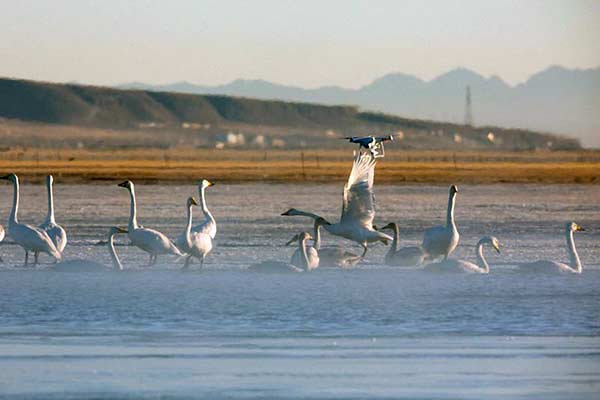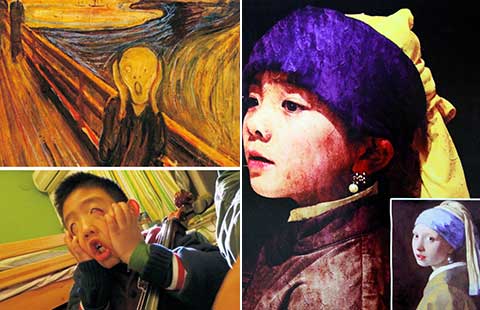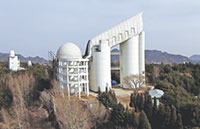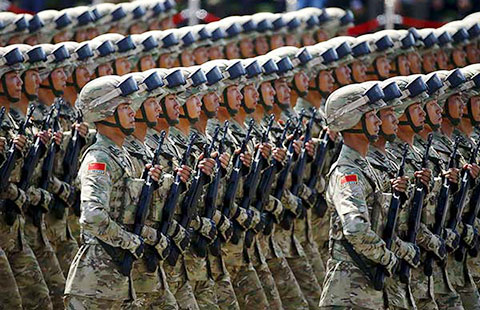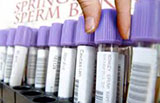Drones add new wrinkle for wildlife
By Chen Liang (China Daily) Updated: 2016-01-08 07:56
|
A drone with a camera hovers above swans at Qinghai Lake in January 2015. Provided to China Daily |
Flying camera gets close to swans at Qinghai Lake, sparking discussion about interference
Recent news about an amateur photographer who frightened hundreds of wild swans wintering at Qinghai Lake by flying a drone equipped with a camera too close to the flock has created a feisty debate on the Internet, especially among bird-watchers and drone enthusiasts.
Many netizens said China needs to publish guidelines and regulations quickly to ensure proper operation of drones, especially around critical wildlife habitats.
Xihai Metropolis Daily in Xining, Qinghai province, reported on Friday that one member of a group of photographers had used a drone to photograph about 300 swans roosting at the lake's Quanwan Bay. Several photographers took photos of the drone hovering about a meter above the swans, who flew away after being disturbed.
On Sunday, some of the photographers returned and found only a few dozen birds at the site. A day later, the photos of the intruding drone were uploaded online, stirring a heated debate about proper use of the remote-controlled devices.
Some enthusiasts said the drone was a popular model produced by Chinese technology company DJI. As the market leader in easy-to-fly drones and aerial photography systems, DJI's flying cameras have given amateurs convenient and affordable assess to aerial photography.
A person online using the name Bing He said he was a photographer and witnessed the entire swan incident. He told ThePaper.cn that the flying camera hovered about a meter over the swans' heads for several minutes, eventually scaring the birds away.
Yin Yuping, a commentator for Nanning Radio, wrote on his micro blog that people should not blame the drones because the real threat is human beings. "We will blame them," he said.
He Yubang, head of the Qinghai Lake Nature Reserve Administration, visited Quanwan Bay on Monday and counted about 80 swans.
He said the drone disturbance was the first of its kind at the lake, though amateur photographers had used firecrackers and honking to previously rouse the roosting swans.
"We still can't say that the swans have left our reserve," he said. "The suitable wintering habitats for swans are many in the lake. They probably just moved to other sites."
He said that the authorities have decided to ban the use of flying cameras at Quanwan Bay and will urge the public to report cases of wildlife disturbances within the reserve.
Li Haitao, a Beijing bird-watcher who in 2006 became one of the first in the city to fly a drone, recorded and took photos of birds with drones from the very beginning.
Compared with their effect on small-sized birds - such as various shore birds - swans are "actually not very sensitive to drones", he said.
Li followed a bevy of wild swans with his drone-mounted camera for several weeks in Beijing in the winter of 2011 and videotaped the birds at a range of several meters.
"They kept cool, with the adult birds just keeping an eye on my drone's movements, while the juvenile birds looked quite curious," he told China Daily. "I didn't try to get much closer and stayed no longer than one minute. Still, there was a certain interference. I have stopped doing it since then."
Whether people consider themselves photographers or nature lovers, they should put the wildlife's welfare above the quality of their photos, Li said.
The government follows some drone management practices in use in the United States, He said, including real-name registration for drone owners and barring drones from restricted areas.
- Efforts to be stepped up to reduce overcapacity
- Senior Chinese leader urges continued anti-graft efforts
- Xi stresses 'green development' along Yangtze River
- Court museum open free to public
- From pension to GDP: the Government's New Year Resolutions
- Inspection team shifts to high gear, grills Hebei's top leaders
- Public-interest lawsuit plan tested
- Leaders point the way for social change
- Li Keqiang meets British foreign secretary
- Second test flights performed at Nansha Islands
